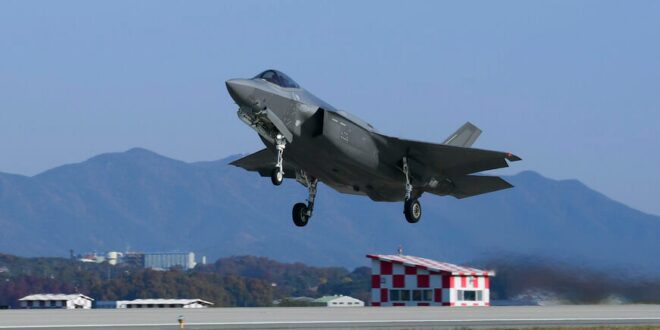The Pentagon is bolstering its defenses in the region as Congress presses the Biden administration to crack down on Iran’s oil and gas exports.
The Pentagon is sending high-end F-35 fighter jets and a Navy destroyer to the Middle East to fend off increasingly aggressive maneuvers by Russian pilots over Syria and to deter a recent spate of attempted seizures of commercial fuel tankers by Iran.
The deployment of the F-35s follows the arrival of stealth F-22s to Jordan from Europe last month on a short-term rotation to ward off Russian pilots’ maneuvers.
Pentagon Deputy Press Secretary Sabrina Singh announced the F-35 deployment on Monday, saying some of the aircraft may already be en route, but did not say how long they would remain in the region.
Late last week, a US Navy guided-missile destroyer — the USS Thomas Hudner — arrived at the Navy’s Fifth Fleet headquarters in Bahrain after passing through the Suez Canal.
Over the weekend, the US Air Force began flying newly-arrived F-16s on patrols over the Persian Gulf to watch over commercial shipping.
‼️ Secretary Austin ordered the deployment of USS Thomas Hudner , F35 & F16 fighters to the Middle East , in response to the recent alarming events in the Strait of Hormuz , says the Pentagon. #Iran@CENTCOM . pic.twitter.com/PLbNAas97k
— Hiba Nasr (@HibaNasr) July 17, 2023USAF A-10 Warthog tank-busters based in the region since late March began flying regular patrols over the Gulf earlier this month, part of a consolidation of US and allied patrols around the Strait of Hormuz in response to recent tanker seizures by Iran.
Iranian naval forces have seized at least three tankers since April following the US Justice Department moved to confiscate the oil cargo onboard a Marshall Islands-flagged tanker — the Suez Rajan — which was bound for China.
Iran’s seizure of a Panama-flagged tanker transiting between the Emirati ports of Dubai and Fujairah on May 3 spurred complaints from the UAE that the US was not doing enough to secure the region’s waterways.
On July 5, the US Navy thwarted two attempts by Iran’s Navy to seize two tankers just hours apart in the Gulf of Oman.
In one of those incidents, crew onboard a pursuing Iranian Navy vessel opened fire upon the tanker Richmond Voyager, whose crew refused orders orders to stop. The Iranian vessel departed the scene after the destroyer USS McFaul approached the area, which US officials said was more than 20 nautical miles off the coast of Oman.
Why it matters: The Biden administration is taking steps to shore up security in the region as it seeks to balance complaints from Arab Gulf states with renewed pressure from lawmakers in Congress who have called for a crackdown on Iran’s exports of sanctioned oil and gas to China.
Pentagon officials lobbying for additional military assets in the region have been touting the short-term, rapid deployments as a way to reassure Middle Eastern allies as Washington focuses its strategic attention in Europe and Asia.
A senior US military official speaking on condition of anonymity last week told reporters that the F-22s were been successful in convincing Russian pilots to back off.
“We were able to maneuver behind them and maintain a position of advantage,” the official said. “They stopped being quite as provocative.”
 Eurasia Press & News
Eurasia Press & News


